Exploring the types of gas fireplaces: a detailed look at styles
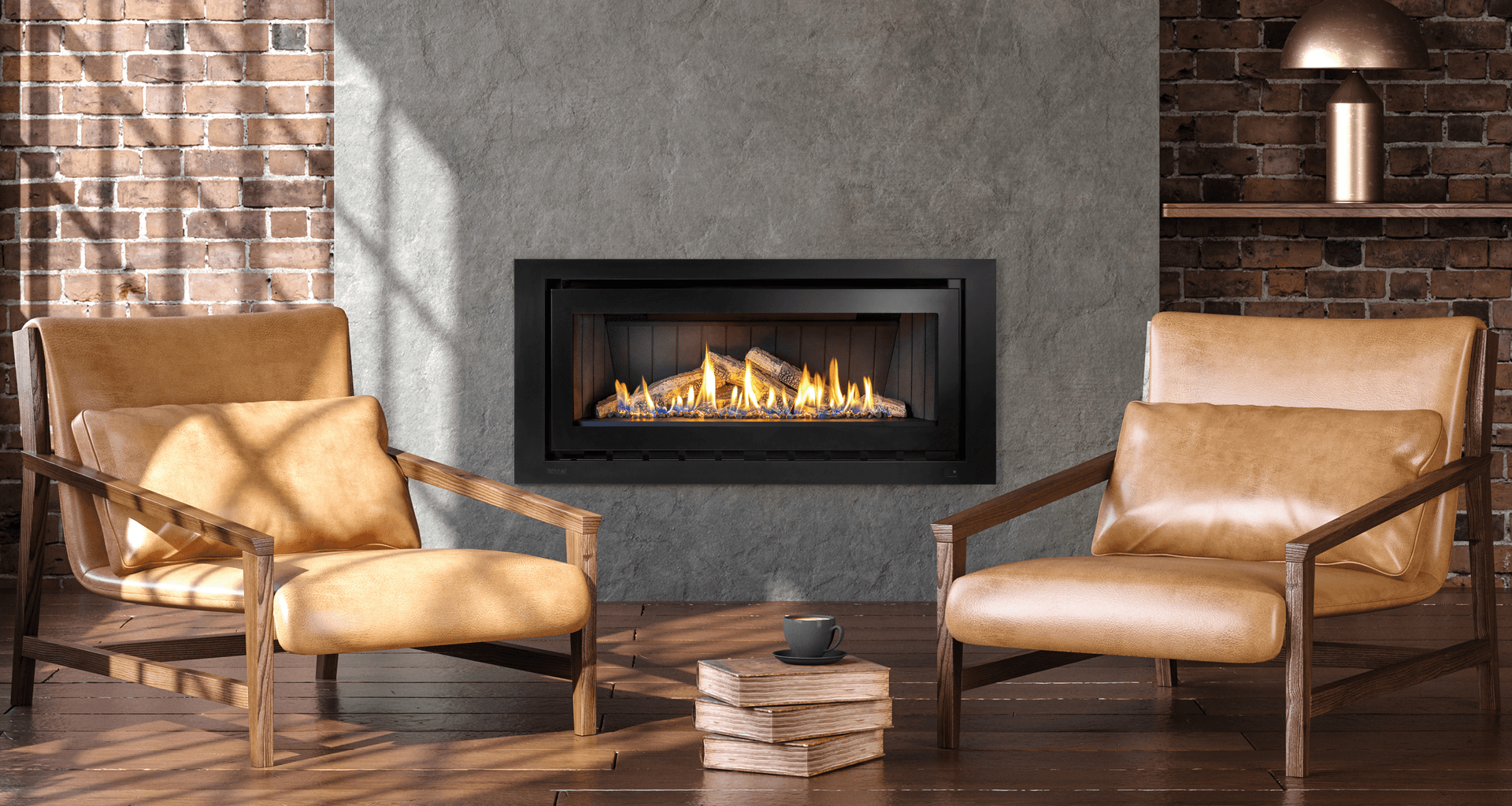
With the vast array of options available, looking at the different types of gas fireplaces can initially feel overwhelming. To make the process more manageable, we've compiled this comprehensive list to help you understand their unique traits. This will allow you to start categorising the different types based on your preferences and needs, focusing on the most relevant options and eliminating those that don't fit your criteria. By narrowing down your choices, you can simplify the decision-making process and confidently select a gas fireplace that complements your home perfectly.
1. Traditional built-in fireplace
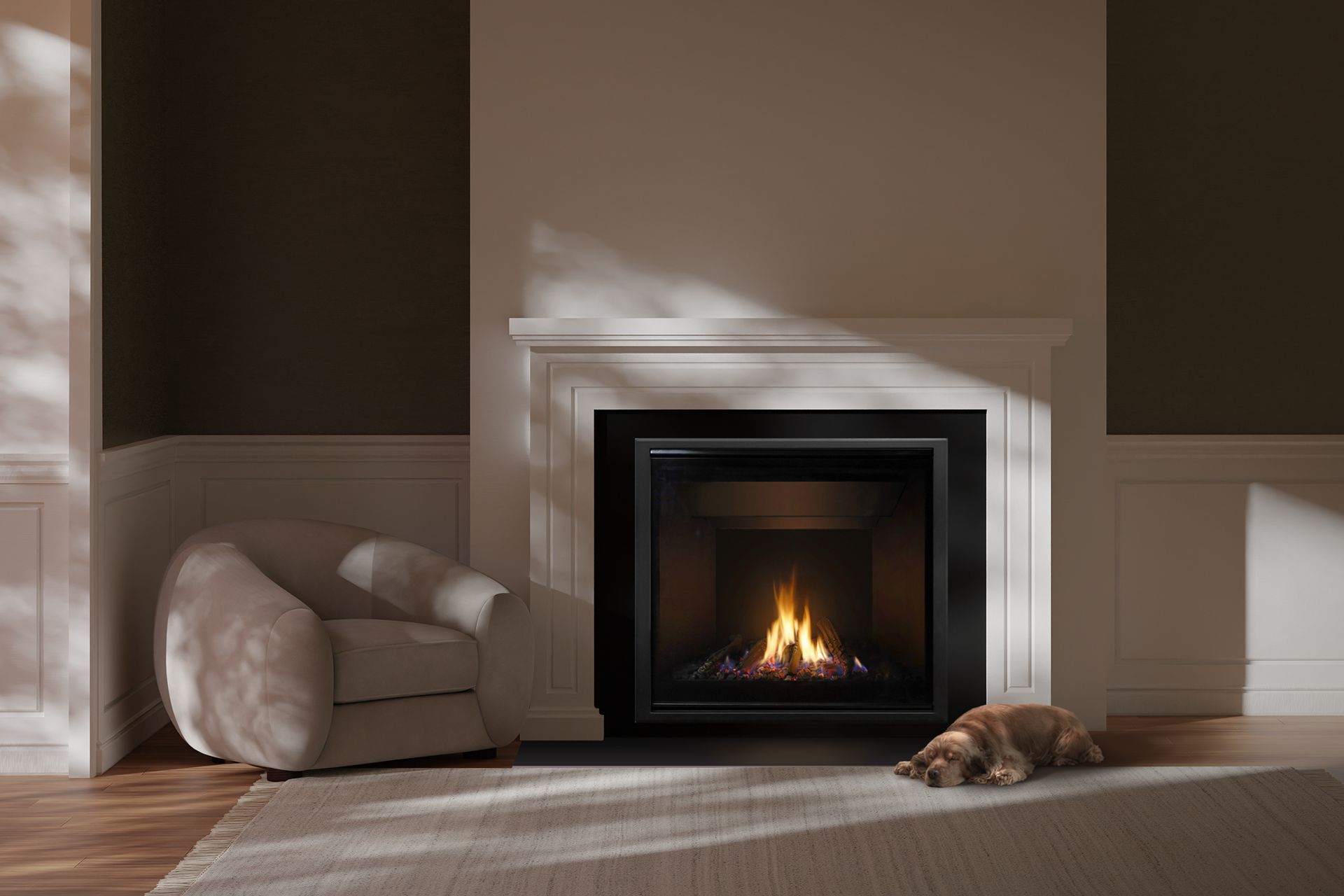
A traditional built-in gas fireplace exudes timeless elegance, making it versatile for classic and contemporary interiors. It typically features a surround made from rich wood, stone, or marble materials, often complemented by a mantel that serves as a decorative focal point. This type can be customised to fit seamlessly into the room’s existing architecture, offering a cosy and inviting ambience that enhances the overall warmth of the space. Whether styled with intricate detailing or kept simple and sleek, a traditional built-in model symbolises home comfort and sophistication.
Pros:
- A timeless look that suits various decor styles.
- It can be customised with different materials and finishes.
- Adds a cosy, familiar atmosphere to living spaces.
Cons:
- It requires more space and requires structural changes during installation.
- It can be more expensive due to the need for a custom fireplace surround.
Best for: Homes with a classic or transitional interior design where a traditional, elegant focal point is desired.
2. Linear fireplace
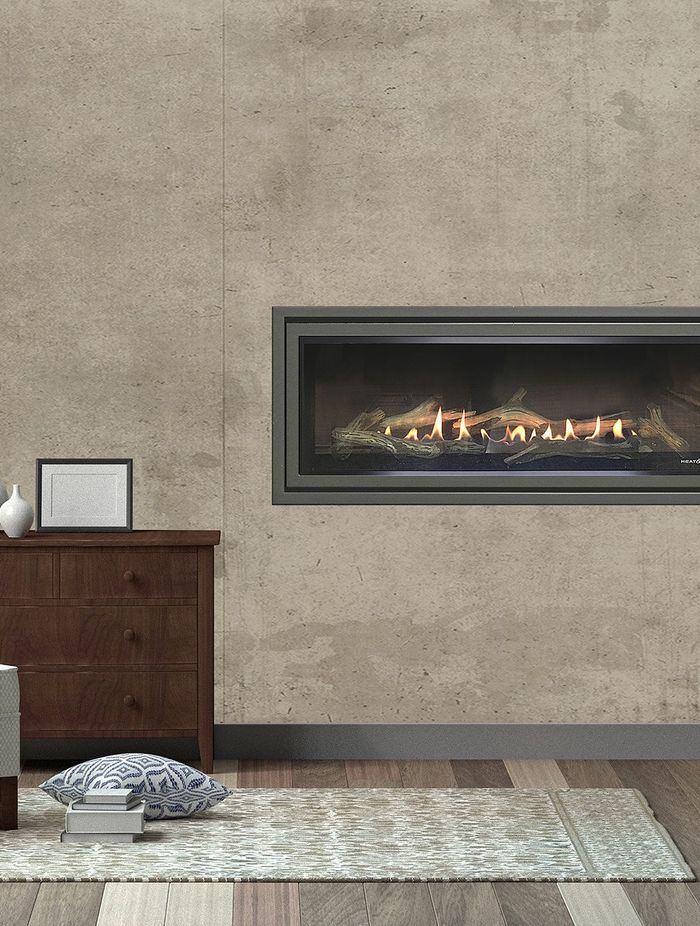
A linear gas fireplace is the epitome of modern times due to its long, narrow firebox that stretches horizontally across a wall. This minimalist design is perfect for contemporary spaces, where its clean lines and elongated flames create a striking visual statement. These fireplaces can Installed at eye level or higher, a linear fireplace draws attention and provides a dynamic focal point without overwhelming the room. The sleek appearance, combined with various finish options such as glass or metal, allows it to blend seamlessly into the modern aesthetic while delivering efficient and stylish heating.
Pros:
- Modern, streamlined look.
- It can be installed at various heights, including eye level.
- Often features clean lines and a variety of finishing options.
Cons:
- Limited to modern or contemporary interiors.
- Typically, it requires professional fireplace installation due to its unique shape.
Best for: Modern and contemporary spaces where a minimalist, sophisticated aesthetic is desired.
3. Corner fireplace
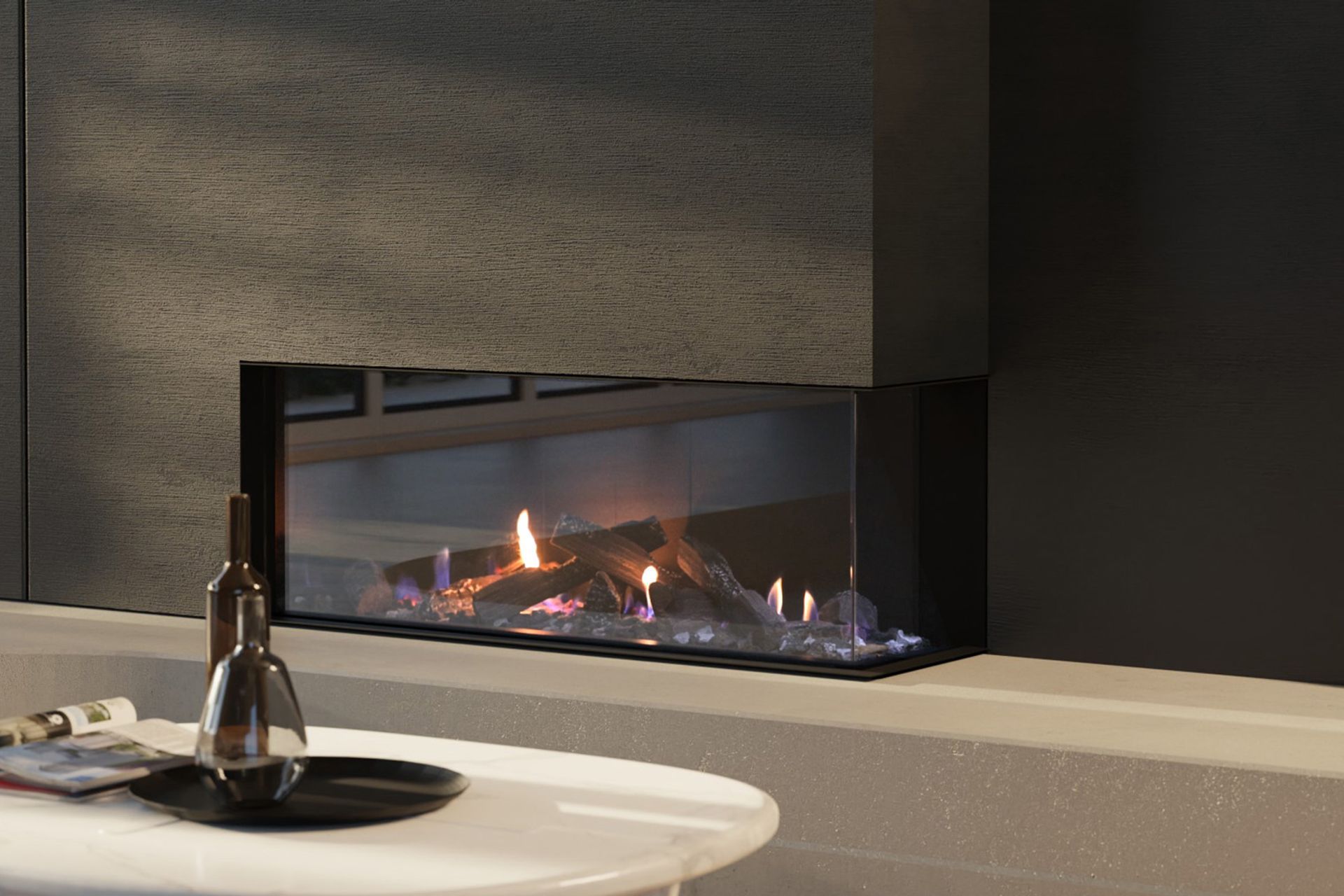
The corner gas fireplace is ideal for rooms with limited space or unique layouts. It offers comfort and ambience without dominating the room. Tucking neatly into the corner efficiently uses space while providing a focal point that can be enjoyed from multiple angles. Moreover, it is beneficial in smaller rooms or awkward spaces where a central fireplace might be impractical. Ultimately, it adds functionality and charm, creating a cosy nook that enhances the overall atmosphere.
Pros:
- Space-saving design.
- It can be installed in smaller or uniquely shaped rooms.
- Adds a cosy focal point without dominating the space.
Cons:
- This may limit furniture placement options.
- It can be less visually impactful than a centrally located fireplace.
Best for: Small living rooms, bedrooms, or other areas where space is at a premium.
4. Double-sided (see-through) fireplace
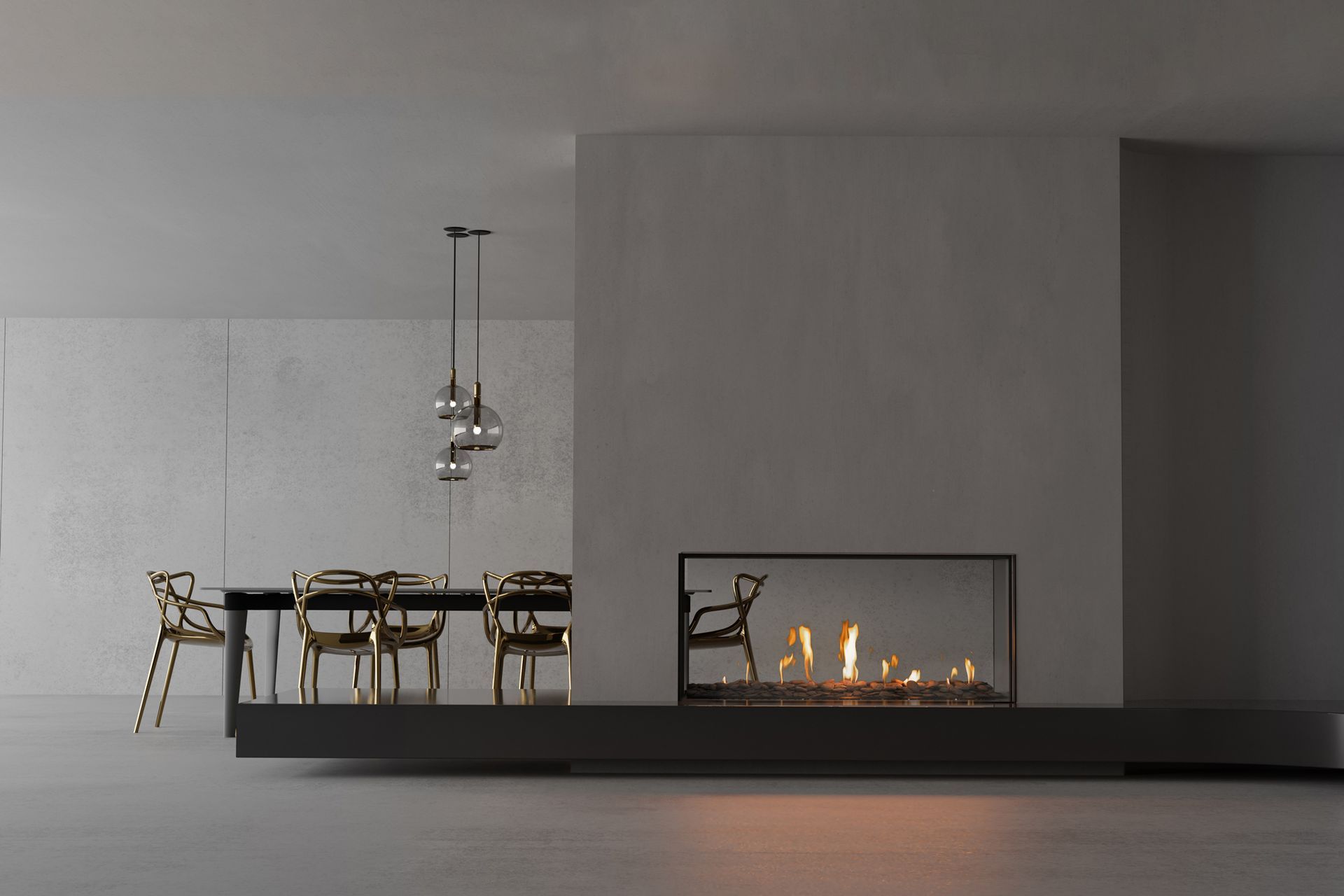
A double-sided gas fireplace is an innovative room divider that offers a clear view of the flames from two adjacent spaces. This one doubles the ambience and warmth and maintains an open, connected feel between the rooms. The transparency enhances the architectural flow of the home, making it a perfect choice for open-plan layouts. With its ability to visually and functionally connect spaces, the double-sided fireplace adds a layer of luxury and sophistication to any modern interior.
Pros:
- Provides cosiness and atmosphere to two spaces simultaneously.
- Creates an open, airy feel by connecting rooms visually.
- Makes a striking architectural statement.
Cons:
- Installation can be more complex and expensive.
- Heat output may be less focused than a single-sided version.
Best for: Open-plan living areas, spaces where a visual connection between rooms is desired.
5. Freestanding gas fireplace
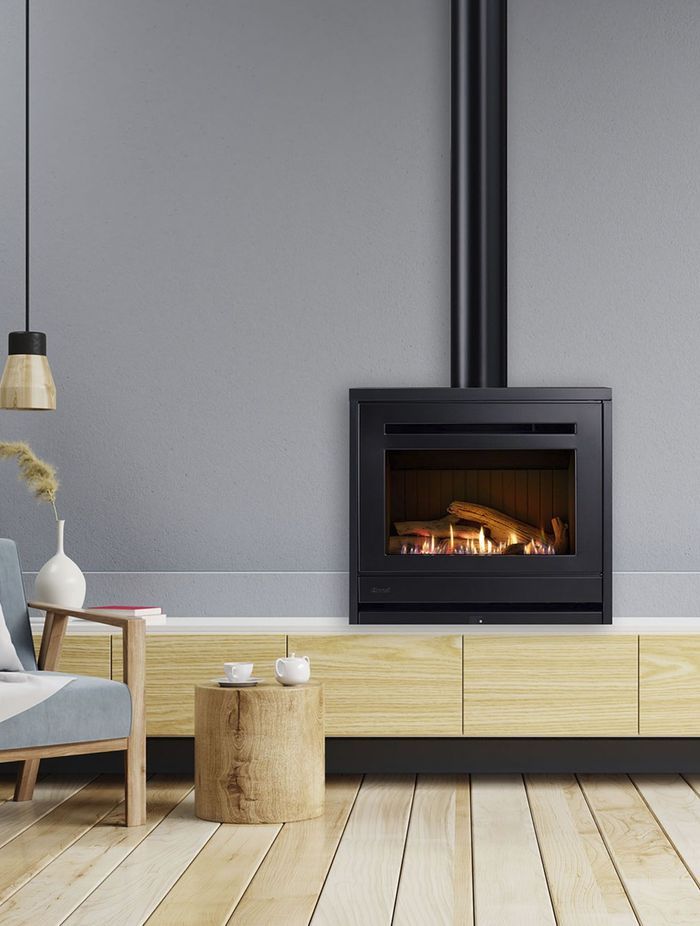
The freestanding gas fireplace is a versatile heating solution that combines modern convenience with timeless style. This versatile unit can be placed anywhere in a room, offering flexibility in placement while providing a cosy charm to any space. Its compact size and easy installation appeal to those seeking style and function without major structural changes. can also be moved more easily than built-in models, making them a practical choice for those who want both style and functionality.
Pros:
- Flexible placement options.
- Provides warmth and ambience in multiple directions
- Often more affordable and easier to install than built-in units.
Cons:
- It may not fit with modern or contemporary decor.
- Limited in design and material options compared to built-in fireplaces.
Best for: Rooms with open floor plans or spaces where design flexibility is desired.
6. Outdoor fireplace
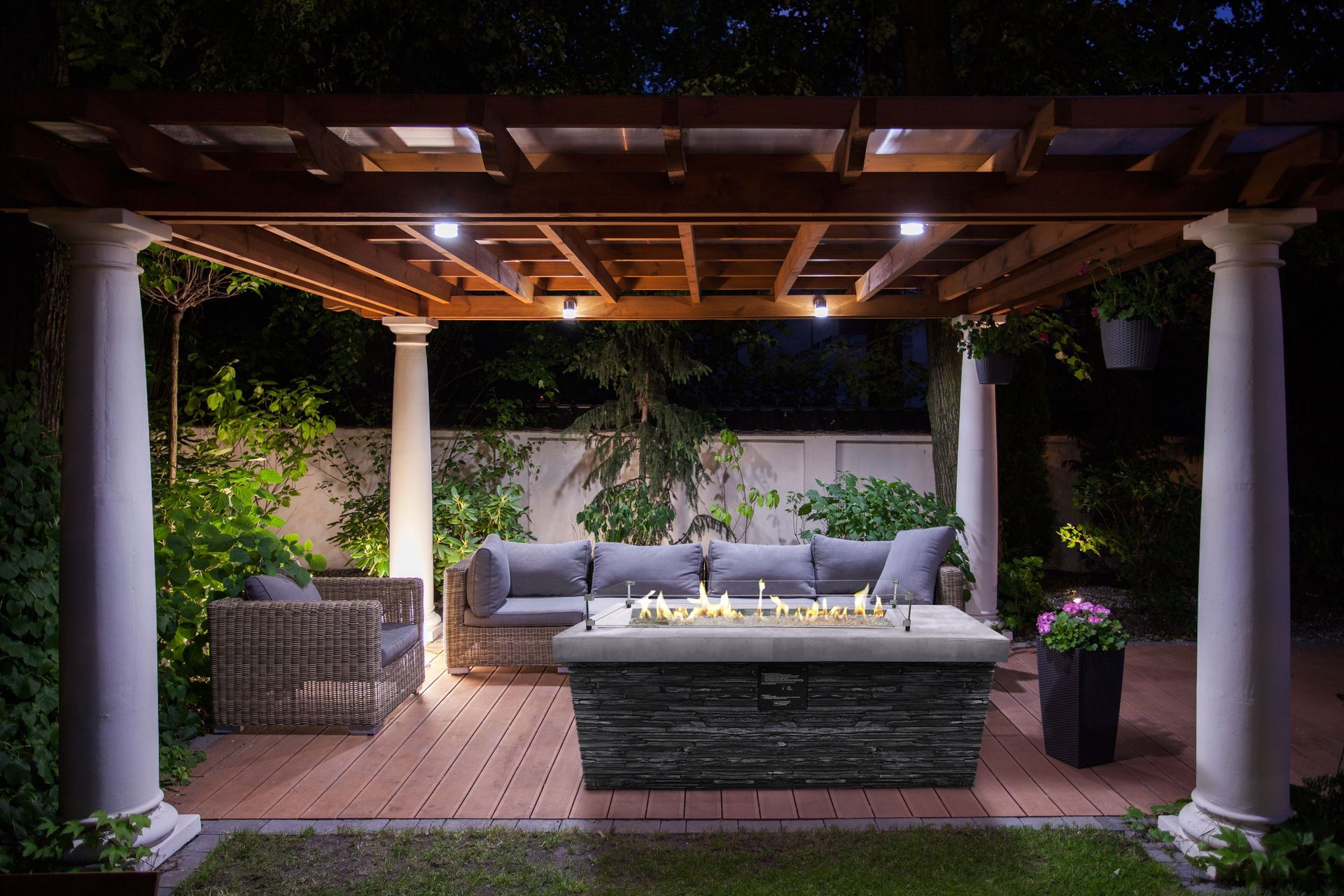
An outdoor gas fireplace extends the comfort of indoor living to your patio, deck, or garden, creating a welcoming space for gathering even in cooler weather. Available in various models, from traditional stone structures to modern fire tables, these are crafted to withstand the elements while providing comfort and mood. Whether used as a focal point for outdoor entertaining or as a serene retreat for quiet evenings, an outdoor fireplace adds style and functionality to your exterior space. Its presence transforms the outdoors into a year-round living area, perfect for socialising or relaxation.
Pros:
- Extends the usability of outdoor spaces into cooler weather.
- Creates a focal point for outdoor living areas.
- Available in a wide range of different models to suit various styles.
Cons:
- It can require outdoor gas lines.
- Limited usability in certain weather conditions, such as heavy rain and snow
Best for: Patios, decks, and outdoor living areas where warmth and atmosphere are desired.
7. Wall-mounted fireplace
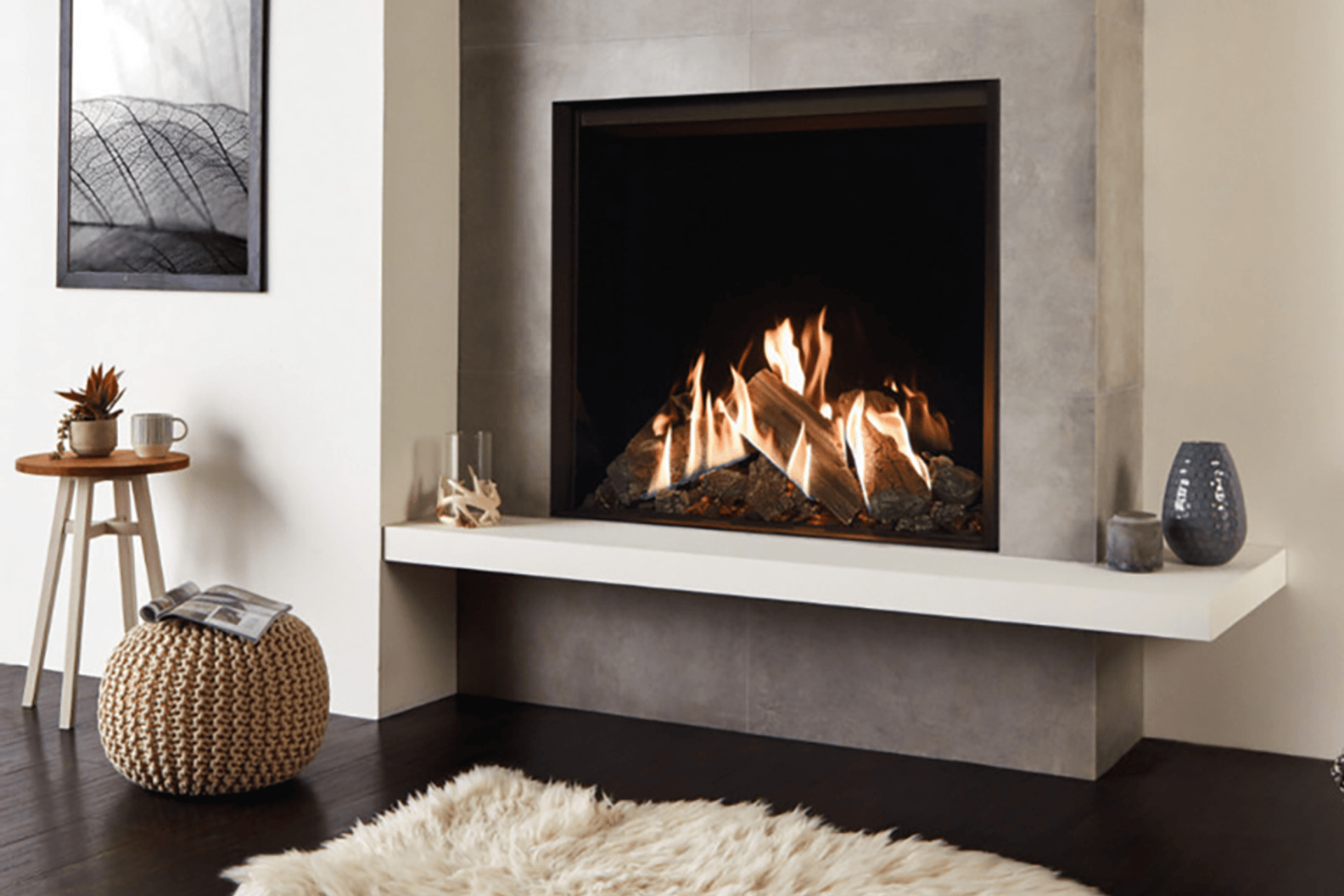
The wall-mounted gas fireplace offers a sleek, space-saving design that can be mounted directly onto a wall, similar to how a flat-screen TV is installed. This type is ideal for small or minimalist interiors where floor space is at a premium, providing comfort and tone without taking up valuable room. They can also be installed at eye level or higher, becoming a striking visual feature that enhances the overall aesthetic. With various styles and finishes available, they seamlessly blend into contemporary decor while offering efficient heating.
Pros:
- It can be installed in various locations, allowing for creative placement in any room.
- Many models are made to provide efficient heating with lower energy consumption.
- Typically, it is easier to clean and maintain than traditional fireplaces.
Cons:
- It may not provide as even heating as floor-standing or built-in fireplaces, especially in larger rooms.
- Requires access to an electrical outlet for operation, limiting placement options in some homes.
Best for: Modern or minimalist spaces with limited floor space, such as apartments or small living rooms.
8. Vertical fireplace
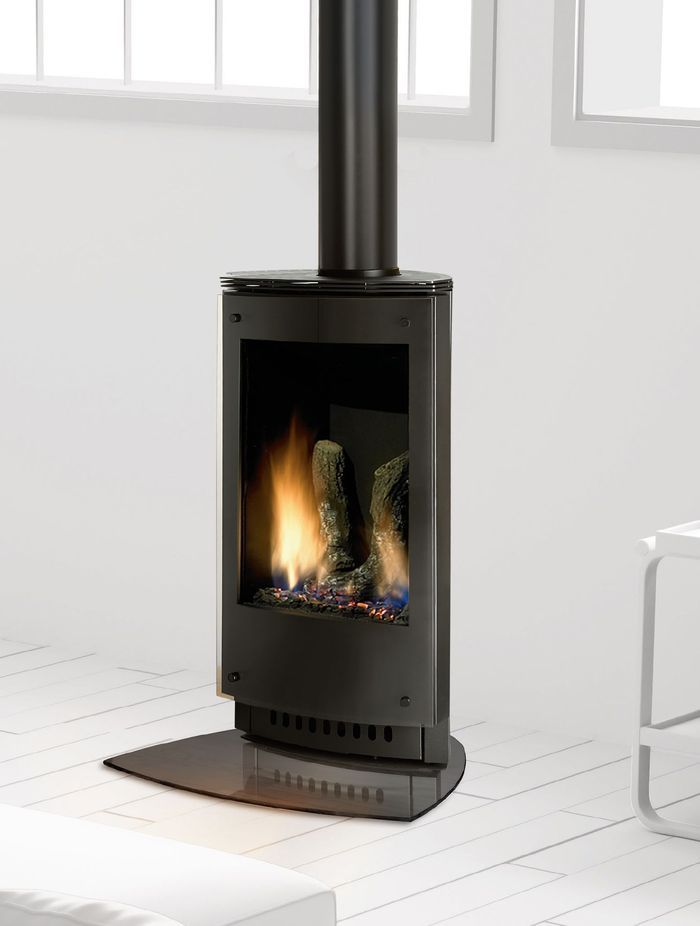
A vertical gas fireplace presents a bold and modern alternative to traditional horizontal models, with its tall, slender shape drawing the eye upward. This unique design is perfect for narrow spaces or rooms with high ceilings, where it adds a dramatic and elegant focal point. The vertical orientation enhances the room’s visual height and is an artistic element, making a strong architectural statement. Ideal for contemporary interiors, these modern-day models bring a touch of sophistication and innovation to any space.
Pros:
- Unique, eye-catching look.
- Ideal for narrow spaces or rooms with high ceilings.
- Adds a modern, artistic element to the room.
Cons:
- It may not provide as much heat as more comprehensive models.
- Limited to specific architectural styles.
Best for: Modern and contemporary interiors, especially in rooms with high ceilings or narrow spaces.
9. Peninsula fireplace
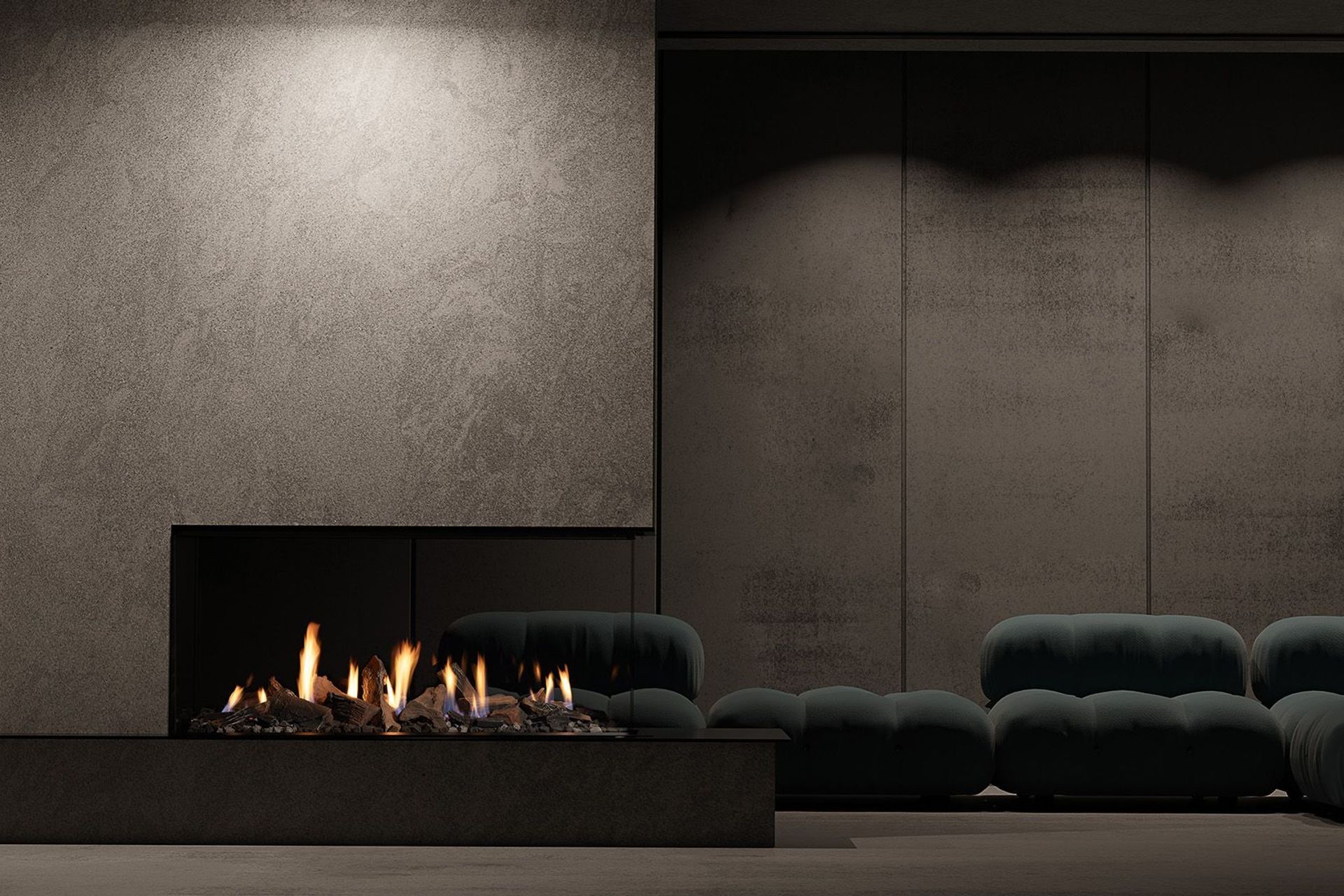
The peninsula gas fireplace is a striking three-sided design that offers a 270-degree view of the flames, making it a stunning centrepiece in open-plan living areas. Its versatility can be positioned to separate spaces while still allowing the cosiness of the fire to be enjoyed from multiple angles. Its open, airy feel enhances the room flow, making it an ideal choice for larger spaces where connectivity and visual impact are key. The peninsula fireplace combines functionality with a bold look, creating a seamless blend of heat, light, and style.
Pros:
- Provides a panoramic view of the fire.
- Adds comfort and essence to multiple areas within a space.
- Creates a dramatic, open feel in large rooms.
Cons:
- Complex installation and potentially higher costs.
- Heat may be less concentrated than in single-sided models.
Best for: Large, open-plan spaces with a desired central focal point.
10. Insert fireplace
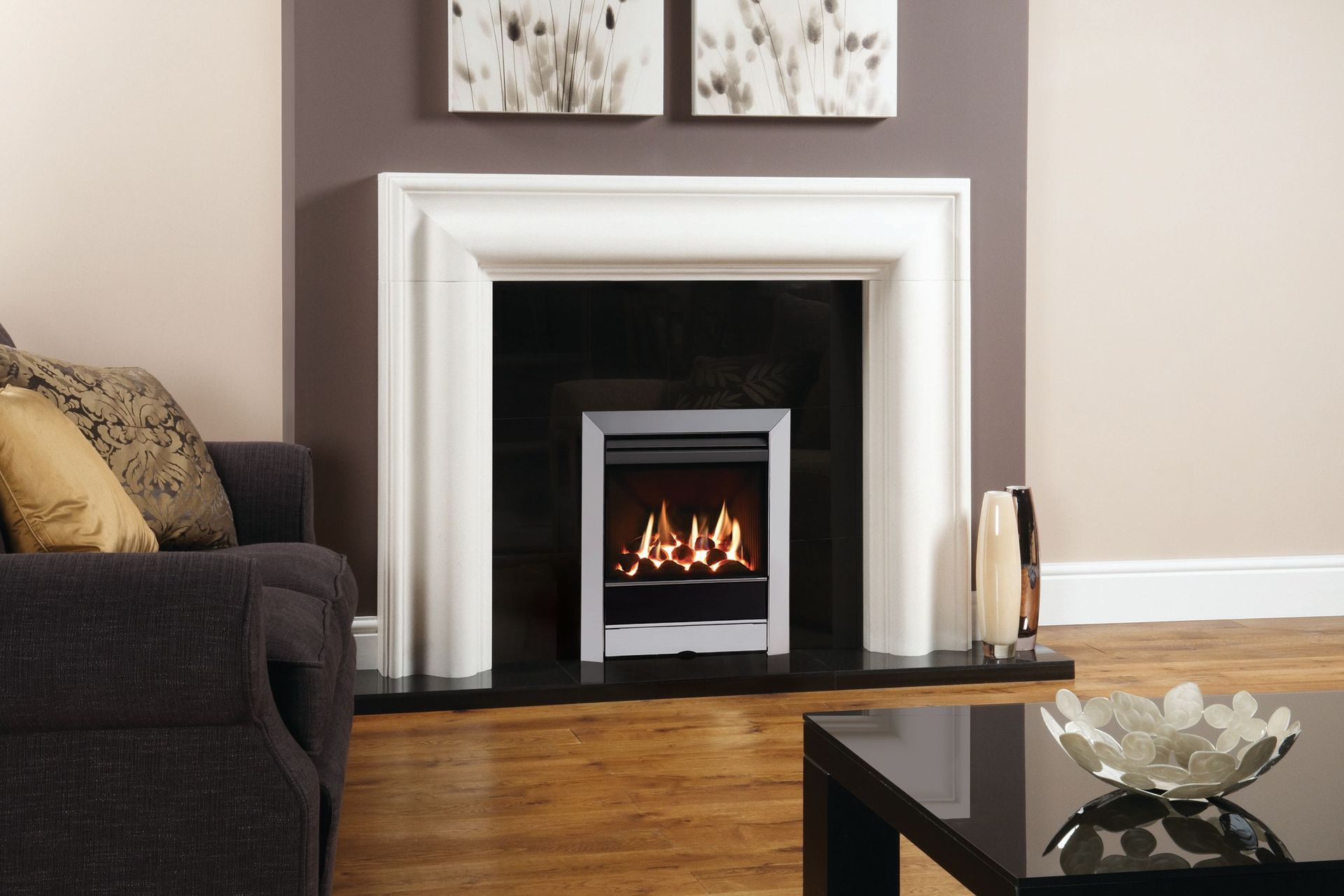
A gas fireplace insert converts a wood-burning fireplace into a more efficient, clean-burning gas unit. This retrofit option allows homeowners to retain traditional aesthetics while enjoying the convenience and lower gas maintenance. The insert fits directly into the existing firebox, improving heating efficiency and eliminating the mess associated with wood fires. This type is perfect for those who want to upgrade their old fireplace without sacrificing its classic charm, offering a practical and stylish solution.
Pros:
- Easy conversion of existing fireplaces to gas.
- Retains the traditional aesthetic.
- More efficient and cleaner than wood-burning options.
Cons:
- Limited to spaces with existing fireplaces.
- It may require additional venting or chimney modifications.
Best for: Homes with existing wood-burning fireplaces where a cleaner, more efficient heating option is desired.
11. Suspended fireplace
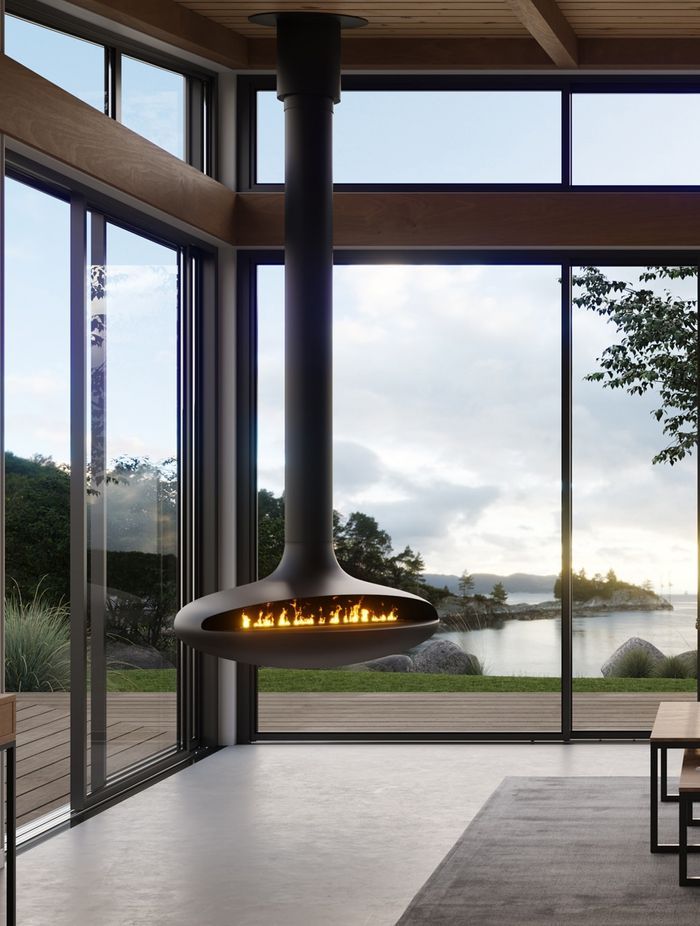
Suspended or hanging or floating fireplaces are a modern and stylish heating solution that offers a striking visual focal point. These fireplaces are mounted from the ceiling, creating a unique, open design that radiates heat in all directions. Typically crafted from metal, they are available in various finishes and styles, making them a versatile option for contemporary interiors.
Pros:
- The suspended design ensures that heat is evenly distributed throughout the room.
- Since they don’t require a floor footprint, suspended fireplaces can save valuable space in smaller living areas.
- Their unique, modern design adds a sophisticated and dramatic touch to any space.
Cons:
- Installing a suspended fireplace can be more challenging and costly compared to traditional fireplaces.
- The need for a strong ceiling structure limits where these fireplaces can be installed.
A quick overview of the costs
Budget considerations are crucial when choosing the right type of gas fireplace. Understanding the costs involved— from the initial purchase to ongoing running and installation expenses—can help you make an informed decision. Knowing these costs, you can better align your choice with your financial goals and avoid unexpected expenses.
Average unit cost
The price of a new gas fireplace can vary widely depending on several factors, including the brand, features, and materials used. Generally, they are available in three main pricing tiers:
- Low-end ($1,200 - $3,000): These models typically offer basic designs and features, making them an affordable choice for those on a budget.
- Mid-range ($4,000 - $8,000): Mid-range fireplaces often feature more stylish models and additional functionalities, such as remote controls and improved materials.
- High-end ($10,000+): High-end options include custom designs, premium materials, and advanced technology, offering a luxurious and highly efficient heating solution.
Annual running cost
Like everything else with cost, it will vary based on several factors. However, most will find that they'll spend between $0.10 to $0.16 cents per hour. For example, if you use your gas fireplace for four hours a day over a 90-day winter period at $0.13 per hour, your total cost would be about $46.80.
Installation
The cost of installation is often forgotten when considering a new gas fireplace. When budgeting out your new one, you can expect to spend between $2,000 to $2,500. Furthermore, you'll need to apply for building consent if installing, replacing, or relocating any appliance containing fire.
Related article: What to expect with a professional fireplace installation
Checklist for choosing the right type of gas fireplace
- Does the design fit your home's style (traditional, modern, etc.)?
- Do you want a classic look with logs or a sleek, contemporary design?
- Is the fireplace size right for the room?
- Will it be a central feature, room divider, or corner piece?
- Is it mainly for mood or heating?
- Does it have the features you need (e.g., heat control)?
- Does it complement your existing decor?
- Will it improve your space and lifestyle?
Keep your home heated in style
A gas fireplace is a practical heating solution and a stylish addition to any home. With various designs to suit different tastes and budgets, it's easy to find a model that fits your lifestyle. Regular maintenance and professional installation will ensure that your fireplace remains a safe and efficient source of comfort for many years.
Related article: The great debate: deciding between a wood-burning or gas fireplace for your home
